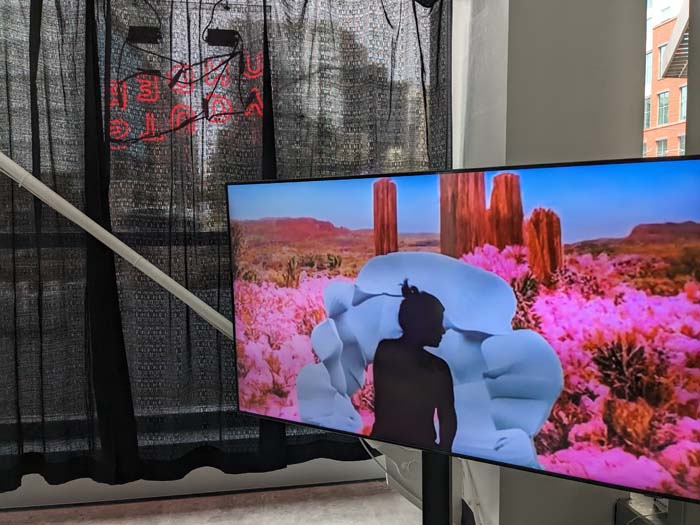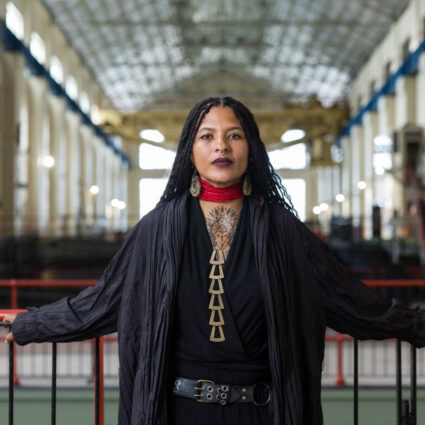Sam Grabowska’s psychotherapeutic virtual installation Intake, on view at Denver’s Understudy gallery empowers participants to choreograph uncomfortable intimacies and thereby find solace.

Sam Grabowska: Intake
May 5– May 28, 2023
Understudy, Denver
As soon as you consent to Sam Grabowska’s (they/them) Intake form, it’s personal. The survey instructs: “Think of someone you really don’t want to see right now. Someone who makes you feel like you’re in purgatory. Someone who makes your heart race or your body tense.“ Leading you in an unpleasant guided meditation, Grabowska adds a parenthetical “sorry about this” before using your answers to multiple-choice questions to project an Artificial Intelligence (AI)-generated landscape onto a screen–a custom stage setting for this dreadful fantasy encounter.
Pondering the word “intake,” the Oxford Dictionary states: “a location or structure through which something is taken.” Considering Grabowska’s academic background in architecture and cultural anthropology, their interest in shelter notably permeates their oeuvre as they take viewers, psychically or physically, into sculptural habitats. Furthermore, conceiving shelters as locations of curative safeguarding, Grabowska focuses on traumatized individuals yearning for salubrious intake beyond or adjacent to an inhospitable and overwhelming milieu.
Intake thus positions us as its patient, rewarding our vulnerability with a “domain of personal care.” In this way, Grabowska self-deprecatingly necessitates our internal “purgatory” in order to shift our relationship with ourselves (body and mind) during those inevitable and unbearable interactions which disempower us. Put differently, Intake permits us to reprogram our “flight or fight” response when we run into that relation who spotlights our flaws, the narcissist who never remembers our name, or the powerful figure who belittles us.
For me, the subjective enterprise prompted by the intake form satisfied my engagement with the piece. As I flipped through a mental Rolodex of unfortunate acquaintances, my body asked for different stimuli depending on whose face darkened my vision. Also, questioning my preferred “skin sensation” and posture, the questionnaire heightened my awareness of my physical disassociations during mundane social interactions. Generally, I let my anatomy decide my experience instead of taking the mental reigns of corporeal choreography and my concomitant feelings.

It didn’t matter, then, that, on the night of Grabowska’s opening, technological hiccups prevented my full experience of the choose-your-own-coping scenery. Discovering myself as the happy architect of my inner world, I was curious about but didn’t need the complementary visual component. My complacency, too, underscored the impossible utopic slant of Intake, involving the unavoidable disconnect, disappointment, or conflict between what it inspires us to imagine and what it bestows.
If this sounds like a harsh critique, it isn’t. After all, Intake is visual art and social experiment, creating stunning and thoughtful images of joyfully or solemnly protecting turfs that stand on their own, separate from the psychotherapeutic agenda. Additionally, once your environment appears, Grabowska invites you to pose “inside,” recording your silhouette for Intake’s archive.
Thinking about Plato’s cave allegory (as hollows filled with shadow and light surely evoke), Intake interestingly inverts the philosophical proposition that we are all chained to a singular, unalterable presentation of reality. As Plato’s semblances remind people of their unfreedom, Grabowska’s projections remind us of the creative choices always available to us.
Having provided such a space for play, healing, and co-creation, I forgave Grabowska for that thing they were sorry about.






